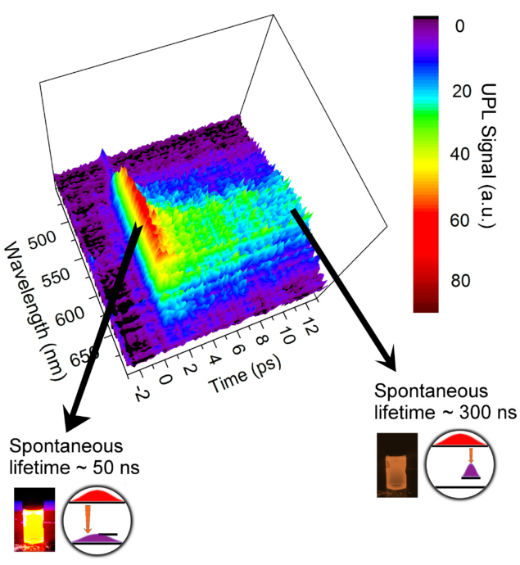|
NOVIDADES
“The spontaneous lifetime of an isolated emitter is a constant that should not vary with time and here you have a spontaneous emitter whose lifetime is changing,” says Anshu Pandey as he expresses his surprise at the recent results from his group. Alongside Arpita Mukherjee and Biswajit Bhattacharyya at the Indian Institute of Science (IISc), Bangalore, Pandey has been investigating the emission characteristics of CuInS2¬nanocrystals. These are very stable emitters, which makes them a desirable candidate for a number of optoelectronic applications. However, a number of observations of the emission behaviour did not add up, prompting the IISc researchers to develop deconvolution techniques to study how the emission lifetime characteristics of their nanocrystals evolved over time. “When we say a nanocrystal has a lifetime of so and so that’s a physical property determined by the material and the density of photon states around it. It’s somewhat like saying a semiconductor has a certain bandgap – you don’t come back five minutes later and say ‘what is its bandgap now?" Mukherjee, first author of the article, tells Physics World. “But in the case of CuInS2/CdS nanocrystals, the spontaneous radiative rate changes over time.”  The results – so far unique to the CuInS2 quantum dots in their study – reveal coupling between the hole wavefunction and the lattice modes after the first few picoseconds and allow a better understanding of the hole localization dynamics. They also provide an explanation for a number of photophysical properties, including the strong stability of the quantum dots that does not compromise other optoelectronic properties. “There are other properties as well, such as an anomalously large Stokes Shift and so on,” adds Pandey, describing observations that were made by other researchers in the field. “So these all pointed very strongly towards the idea that there must be a localization phenomenon somewhere but a direct observation was absent.” The usual approach would be to probe the transient absorption – “a standard go to for spectroscopists studying nanocrystals” as Pandey points out. Here changes of the absorption are measured over time after a flash of light. However it is not possible to use this technique to track valence band holes in CuInS2 based nanocrystals. As a result, the IISc researchers also looked at the upconversion photoluminescence, which allows the measurement of luminescence transients with a high temporal resolution. With these measurements they could detect a faster contribution to the decay over the first 15 nanoseconds. Normally researchers explain fast decay transients as the result of non-radiative decay processes but this explanation would mean a quantum yield of around 0.4% whereas the quantum yield Pandey and co-workers measured was around 60%. Localization of one of the carrier wavefunctions seemed the only plausible cause. “This offers an explanation for the extraordinary stability of these materials” says Pandey, highlighting that this desirable attribute is already widely acknowledged. “That’s happening because their emission is coming from these localized states, and the bulk of the emission is taking place after this localization. So this provides a very direct explanation of how this material behaves.” Full details in Nano Futures. By Anna Demming. Physics World. Posted: Oct. 15, 2018. |
|||||||||||||||||||||||||